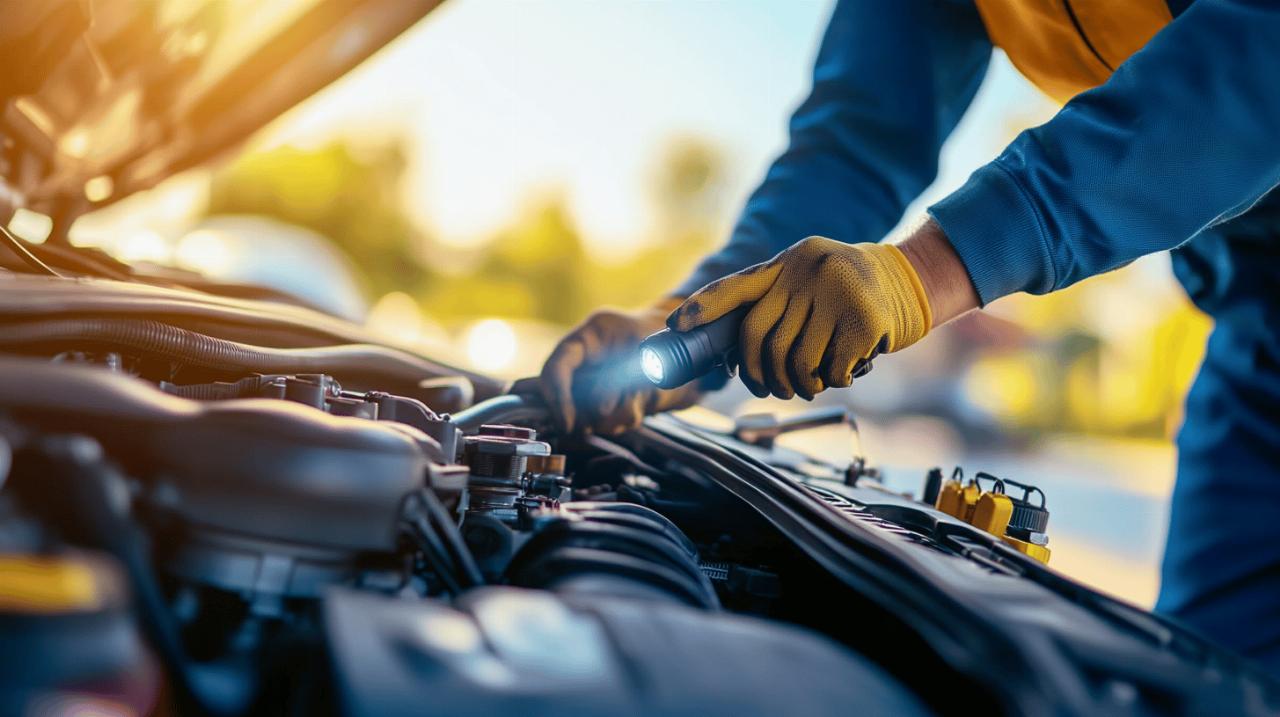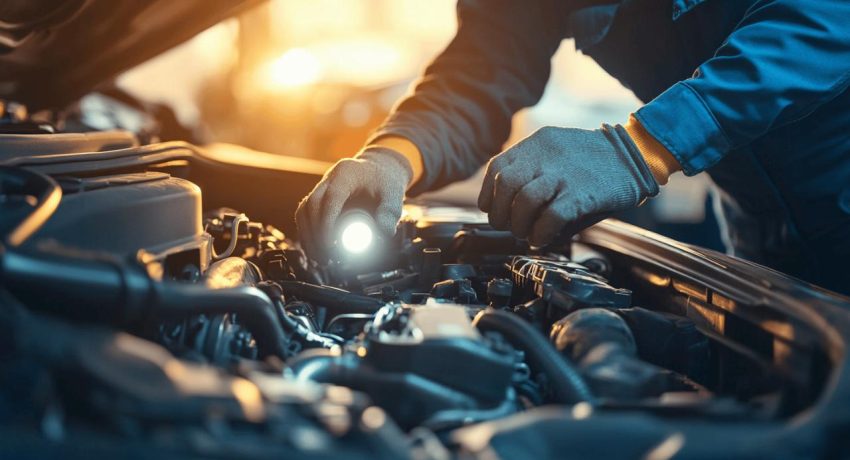Keeping your car in optimal condition goes beyond simply maintaining its appearance. It’s about ensuring your safety on the road, maximizing your vehicle’s lifespan, and preventing costly repairs. This comprehensive guide covers the essential aspects of car maintenance and safety that every driver should know, from basic engine care to emergency preparedness and safe driving practices.
Engine care and regular servicing
Your vehicle’s engine is its heart, requiring consistent care to function properly. Following the manufacturer’s recommended service schedule is crucial for maintaining performance and preventing breakdowns. Regular servicing helps identify potential issues before they become serious problems. For more detailed information about specific vehicle maintenance, you might want to visit https://www.automag.es/ which offers comprehensive guides on various car maintenance topics.
Understanding service intervals
Service intervals vary depending on your vehicle’s make, model, and age. Most modern cars require servicing every 12,000 miles or annually, whichever comes first. Your owner’s manual contains the specific schedule for your vehicle. Alarmingly, studies show that over 26% of drivers haven’t changed their engine oil in over a year, while 20% have never changed it at all. This neglect can lead to significant engine damage over time.
Monitoring engine performance
Pay attention to how your engine performs during everyday driving. Unusual noises, vibrations, or a decrease in power could indicate potential issues. Dashboard warning lights serve as your car’s communication system, alerting you to problems requiring attention. The FORCES check is a useful reminder of essential maintenance areas: Fuel, Oil, Rubber, Coolant, Electrics, and Screen wash. Regularly checking these elements can prevent many common roadside breakdowns.
Tyre maintenance
Tyres are your only contact with the road, making their maintenance critical for safety. Proper tyre care improves handling, braking, fuel efficiency, and extends tyre life. Regular checks should be part of your routine car maintenance.
Proper inflation techniques
Check tyre pressure at least monthly and before long journeys, ideally when tyres are cold. Under or over-inflated tyres can affect handling, increase fuel consumption, and accelerate wear. The correct pressure specifications can be found in your owner’s manual, inside the fuel filler cap, or on the driver’s door frame. Remember that heavier loads and seasonal temperature changes may require pressure adjustments.
Checking tread depth and wear patterns
The legal minimum tread depth in the UK is 1.6mm across the central three-quarters of the tyre. However, experts recommend replacing tyres when the tread reaches 3mm, especially during winter months for better grip in wet conditions. Uneven wear patterns might indicate alignment or suspension issues that require professional attention. Also inspect tyres for cuts, bulges, or objects embedded in the rubber, as these can lead to dangerous blowouts.
Vehicle lighting systems
Properly functioning lights are essential for visibility and communication with other road users. A comprehensive lighting check should be performed regularly to ensure safety and legal compliance.
Regular bulb checks and replacements
Walk around your vehicle at least once a month to check that all lights are working correctly, including headlights, brake lights, indicators, and fog lights. Having a family member or friend help with this check makes it easier to verify brake lights. Replace any faulty bulbs immediately to maintain visibility and avoid potential fines. Consider carrying spare bulbs for emergencies, especially when travelling abroad where they might be required by law.
Legal requirements for car lights
All vehicles must have properly functioning lights to be road legal. Driving with defective lights can result in fixed penalty notices and potentially points on your licence. Headlights must be properly aligned to avoid dazzling oncoming traffic while providing adequate illumination. Modern vehicles often have complex lighting systems, so consult your owner’s manual before attempting to replace bulbs yourself or seek professional assistance.
Vital fluid levels
Various fluids keep your car’s systems functioning optimally. Regular checks and top-ups are essential maintenance tasks that can prevent serious mechanical failures.
When and How to Top Up Engine Oil
Engine oil lubricates moving parts, reducing friction and preventing overheating. Check oil levels every two weeks and before long journeys. Ensure your car is parked on level ground with the engine cool. Remove the dipstick, wipe it clean, reinsert it fully, then check if the oil level is between the minimum and maximum marks. If low, add the correct grade of oil in small amounts, checking the level between additions to avoid overfilling. A survey revealed that one in three vehicles on the road are dangerously low on oil, which can lead to catastrophic engine failure.
Coolant, brake fluid and windscreen wash maintenance
Coolant prevents your engine from overheating and freezing in extreme temperatures. Check the level in the expansion tank when the engine is cold, ensuring it’s between the minimum and maximum marks. Brake fluid should be checked monthly, as low levels can indicate wear or leaks in the braking system. Windscreen wash is often overlooked but is vital for maintaining visibility. Keep it topped up with a quality screenwash solution that works in all seasons.
Brake system inspection
Your braking system is arguably the most critical safety feature of your vehicle. Regular inspections and maintenance are essential to ensure optimal stopping power when you need it most.
Warning signs of brake problems
Be alert to signs of brake wear or malfunction. These include squeaking or grinding noises when braking, vibration through the brake pedal, pulling to one side during braking, or increased stopping distances. A soft or spongy brake pedal could indicate air in the brake lines, while a brake pedal that sinks to the floor might suggest a serious fluid leak. The brake warning light on your dashboard should never be ignored, as it indicates a potential safety issue requiring immediate attention.
Professional vs diy brake checks
While some aspects of brake maintenance can be performed at home, such as checking fluid levels, most brake system components require professional inspection. Brake pads typically need replacement every 20,000 to 45,000 miles, depending on driving habits and conditions. A professional service will include checking pad thickness, disc condition, caliper operation, and fluid quality. For those comfortable with basic maintenance, visual inspections of brake components can help identify potential issues before they become serious problems.
Emergency preparedness
Even with diligent maintenance, emergencies can still occur. Being prepared for unexpected situations can make a significant difference in your safety and comfort.
Creating a comprehensive emergency kit
A well-stocked emergency kit should include a warning triangle, high-visibility vest, first-aid kit, torch with spare batteries, blankets, bottled water, and non-perishable snacks. Additional useful items include jump leads, a tyre inflation kit or foot pump, basic tools, and a power bank for mobile phones. During winter months, consider adding ice scrapers, de-icer, warm clothing, and a shovel. Keep these items in your boot, easily accessible but secured to prevent them becoming projectiles in an accident.
Roadside safety protocols
If your vehicle breaks down, safety should be your primary concern. Move to the left-hand side of the road if possible, activate your hazard lights, and find a safe place away from traffic. On motorways, exit the vehicle from the left side and stand behind the barrier. Place a warning triangle at least 45 metres behind your vehicle on regular roads, but never on motorways. Call for assistance and provide clear location details. Avoid attempting repairs in dangerous locations or during poor visibility conditions.
Journey planning and driver alertness
Proper journey planning and maintaining alertness behind the wheel are crucial aspects of road safety that complement vehicle maintenance.
Planning rest stops for long journeys
Before embarking on long trips, plan your route to include regular rest stops, ideally every two hours or 100 miles. Identify service areas or safe stopping points along your journey. Consider traffic patterns and peak travel times when planning departures to avoid unnecessary stress and fatigue. Share driving responsibilities on particularly long journeys when possible. Ensure your vehicle is thoroughly checked before setting off, as this reduces the likelihood of breakdown-related stress and fatigue.
Recognising signs of driver fatigue
Driver fatigue is a significant factor in road accidents. Learn to recognise warning signs such as frequent yawning, heavy eyelids, difficulty concentrating, slower reaction times, or drifting across lanes. If you notice these symptoms, find a safe place to stop and rest. Short naps of 15-20 minutes can significantly improve alertness. Caffeinated drinks may provide temporary alertness but are not substitutes for proper rest. Remember that certain medications, alcohol consumption the night before, and medical conditions can all contribute to increased fatigue levels.
Seatbelt safety and passenger protection
Seatbelts remain one of the most effective safety devices in vehicles, significantly reducing the risk of serious injury or death in accidents.
Legal requirements for seatbelt use
UK law requires all vehicle occupants to wear seatbelts if fitted, with few exceptions. Drivers are responsible for ensuring passengers under 14 years wear appropriate restraints. Adults are individually responsible for their seatbelt use, with fines of up to £500 possible for non-compliance. Pregnant women must wear seatbelts, with the lap portion positioned below the bump, across the pelvis. Medical exemptions are rare but can be issued by doctors if wearing a seatbelt would cause harm.
Child seat and restraint systems
Children under 12 years old or under 135cm in height must use an appropriate child restraint system. Different types of seats are required for different age groups and weights, from rear-facing infant carriers to booster seats for older children. Always ensure child seats are correctly installed according to manufacturer instructions. ISOFIX anchor points provide the most secure fitting method available in modern vehicles. Regularly check that harnesses are correctly adjusted as children grow, and replace seats that have been involved in accidents.
Adapting driving to weather conditions
Different weather conditions require adjustments to driving technique and vehicle preparation to maintain safety on the road.
Techniques for Driving in Rain and Fog
In rainy conditions, reduce your speed and increase following distances to account for reduced visibility and longer stopping distances. Use dipped headlights to improve visibility without creating glare for other drivers. Avoid sudden braking or steering inputs that could cause skidding on wet surfaces. When driving through standing water, slow down to prevent aquaplaning, and test your brakes gently afterwards. In fog, use fog lights only when visibility drops below 100 metres, and remember to switch them off when conditions improve.
Winter driving precautions
Winter conditions require additional preparation and caution. Ensure your antifreeze and screen wash are suitable for low temperatures. Consider switching to winter tyres when temperatures consistently drop below 7°C, as they provide significantly better grip. Allow extra time for journeys and carry additional emergency supplies. When driving on snow or ice, use higher gears to reduce wheel spin, maintain gentle acceleration and braking, and increase following distances substantially. Clear all windows completely before setting off, as restricted visibility significantly increases accident risk.
Avoiding distractions behind the wheel
Driver distraction is a leading cause of accidents, with modern technology creating additional hazards that require conscious management.
Mobile phone risks and regulations
Using a hand-held mobile phone while driving is illegal in the UK, carrying penalties of six points and a £200 fine. Even hands-free use significantly impairs concentration and reaction times. Research shows that drivers using phones are four times more likely to be involved in a crash. Set your phone to do not disturb mode before driving, or place it out of reach to avoid temptation. If you need to make a call or check messages, find a safe place to stop with the engine switched off.
Creating a distraction-free driving environment
Beyond mobile phones, many other distractions can compromise safety. Set up your navigation system, select music, and adjust seating and mirrors before starting your journey. Secure loose items that could roll around and distract you. If travelling with children, ensure they have appropriate entertainment and that any required items are within easy reach of passengers. Avoid eating, drinking, or complex interactions with vehicle controls while driving. Remember that even conversations with passengers can be distracting during challenging driving conditions.








